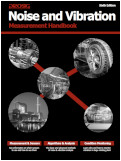When performing experimental modal testing of a structure or component using impact (or ping) testing, it is important to consider and verify the validity of any results. A modal analysis is valid if it satisfies several assumptions. Some basic checks include:
- linearity,
- reciprocity,
- time invariance and
- observability
A series of checks should be done to gain confidence that the experimental results satisfy the requirements inherent to this type of analysis.
We will deal with each of these checks over a series of articles. This article, Part 1, deals with Linearity.
Experimental Modal Testing – Linearity Check
Modal analysis is a process of calculating the transfer function between the responses and the excitation. The transfer function is generally expressed as
where H is the transfer function also called the frequency response function (FRF); X is the measured system response and F is the applied external force.
For a linear system, the larger the applied force to a structure, the stronger the response, therefore the transfer function will not be affected by the level of excitation force that is applied on the structure each time. Therefore, if the linearity assumption is true, the individual FRFs calculated from each time can be averaged to obtain a smoother FRF. In some cases when non-linear behaviour is inevitable but not overwhelm the main linear trend, averaging FRFs can smooth linear estimation.
Typically, the linearity can be checked in two ways:
- Checking the consistency of the FRF by varying the excitation force level: For example, we can measure the response at one end of a free-free hanging steel bar with a excitation force applied at the other end of the bar. If the transfer function does not vary with the excitation force applied, the structure response is linear.

However, when the impact force exceeds a certain limit, non-linear modes could be excited and the FRF will be contaminated as shown in the following figures.


- Checking the coherence function during the impact test: The coherence indicates the percentage of energy transferred from the excitation to the response. It can be treated as an indicator of the system linearity. Good coherence is close to one over the frequency band concerned that indicates the vibration response is perfectly correlated to the excitation force. The figure below shows a comparison of a high (top) and low-quality (bottom) coherence graphs. The coherence values are too low over the regions circled and “messy”, the measurement should be repeated. It is worth noting the coherence is normally low at an anti-resonances.

Strong non-linearities in the system can cause distortions in the FRFs that shall be avoided in impact testing. Many reasons can cause the non-linear behaviour, for example:
- Excess impact force can excite non-linear modes of the structure and contaminate the transfer function matrix.
- Transfer functions calculated often shows poor linearity when performing impact test on a highly damping complicated coupled structure.
- Improper supporting method will introduce non-related system coupling issues.
Watch this space for the next article in this series on experimental modal testing which will describe reciprocity.
Make sure you don’t miss the rest of this series. Sign up to our mailing list
Dr Cindy (Xin) Wang
Latest posts by Dr Cindy (Xin) Wang (see all)
- Impact Hammer Double Hit – An Investigation - June 13, 2023
- Some Basic Vibration Signal Qualities - August 17, 2022
- Automated data capture, analysis and reporting - May 10, 2022






Pingback: Are My Hammer Impact Results Valid? (2) Reciprocity